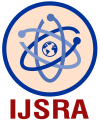ISSN Approved Journal || eISSN: 2582-8185 || CODEN: IJSRO2 || Impact Factor 8.2 || Google Scholar and CrossRef Indexed
Fast Publication within 48 hours || Low Article Processing Charges || Peer Reviewed and Referred Journal || Free Certificate
ISSN Approved Journal || eISSN: 2582-8185 || CODEN: IJSRO2 || Impact Factor 8.2 || Google Scholar and CrossRef Indexed
Fast Publication within 48 hours || Low Article Processing Charges || Peer Reviewed and Referred Journal || Free Certificate
Research and review articles are invited for publication in April 2025 (Volume 15, Issue 1)
From January 2025 onwards Articles published by IJSRA will be preserved at url https://journalijsra.com
Copyright © 2024 Author(s) retain the copyright of this article. This article is published under the terms of the Creative Commons Attribution Liscense 4.0
Copyright © 2025, International Journal of Science and Research Archive
Designed by World Journal Publication
